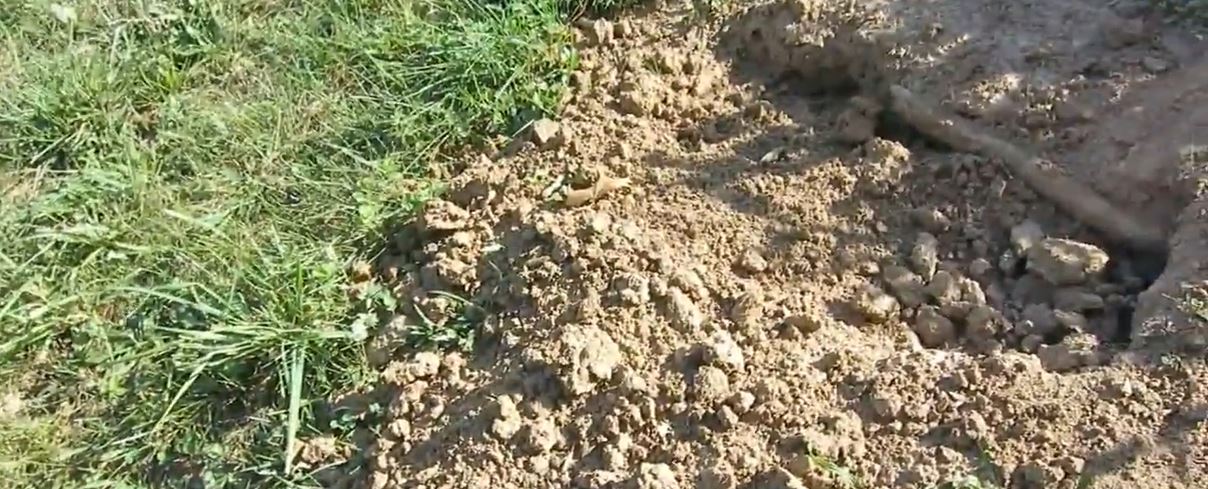Animal Digging In Yard Or Next To House

As a homeowner, you take a great deal of pride in the appearance of your property, from the state of your home to your landscape. When unsightly holes or piles of dirt begin to appear, it can be discouraging, especially when you aren't sure what wild animal is to blame. There are many different types of animals that can be digging holes in your yard or by your home and each will have a slightly different method to prevent their action. Unfortunately, you can't exclude an animal from your yard like you can from your home, making it more complicated. Luckily, you will still find plenty of solutions to the issue once you identify the animal digging the holes.
General Tips For Identifying Holes
As mentioned, the first step when you have an animal digging in your yard or by your house is to work to figure out what animal it is. Most people will not be lucky enough to catch the animal in the act, in which case you will need to carefully examine the hole. Pay attention to the size, shape, and depth of the hole as well as where it is located. Also take a moment to think about the time of the year as certain animals are more likely to dig holes for food during specific seasons. Combine your observations with the following information about recognizing holes dug by the most common culprits.
Identifying Skunk Holes
Generally speaking, skunks will be the animal behind shallow holes that are surrounded by loosened dirt in a ring. The hole will be about the same size as the skunk's nose as skunks press their noses into the soil then dig using their front, long claws. These holes typically occur at night when skunks, who are nocturnal, are searching for food, such as soil insects, grubs, or earthworms. In severe cases, you may have enough skunk holes where a patch of your yard appears to have been tilled.
Identifying Raccoon Holes
Raccoons, like skunks, eat the above insects and soil dwellers as well as small animals, eggs, frogs, and more. The difference, however, is their digging method which leads to a variation in the appearance of the holes. Raccoons dig with their front paws, using them as we would hands, meaning that they pull and then flip the pieces of sod. They will especially do this on grass that has shallow roots or sod that is freshly laid as it is easier to rip and tear.
Identifying Mole Holes
If you don't actually see any holes, but notice mounds of soil that indicate there are holes below, moles are most likely to blame. This is because moles push the soil up from below. During warmer months, moles will work anywhere from directly beneath the surface to more than 6 inches below depending on species, occasionally making a hole to serve as an air vent. In the winter months, the ground will be partially frozen and all types of moles push up soil piles while active as they feed on soil insects, grubs, and earthworms.
Identifying Rat Holes
Rat holes also tend to be easy to identify because specific species, such as the Norway rat, will line their burrows using fibrous material such as shredded paper. These rats will create the burrows as a safe place to live and hide from predators. In some cases, the rat burrows will include escape tunnels which surface on the other end of your yard from the main burrow. Rats are more likely to dig holes in your yard underneath garbage cans or compost piles.
Other Possible Culprits
In reality, almost any animal can dig a hole in your yard. Other possibilities not mentioned above include voles, gophers, squirrels, chipmunks, shrews, snakes, birds, and rabbits. Because of the number of possible animals, you may sometimes need a professional to help you identify the animal.
Use Netting To Stop Them
Stopping an animal from digging by your home can be a challenge without building a solid wall to keep them out, which is not practical or common. One of the easiest methods is to simply place netting over your entire lawn, or the specific area that they dig. Make sure that you select netting with a fine enough mesh that the animal cannot go through the holes. Keep in mind that you will have to take off the netting to mow your lawn.
Install A Motion-Activated Sprinkler
Another option to deter the animals without a great deal of extra effort on your part would be to invest in a motion-activated sprinkler. It will turn on and spray the digging animal when they enter your property, discouraging their actions. Keep in mind, however, that this won't be effective against those who dig from underground, such as moles. You can also try a motion-activated light or sound system, but most homeowners tend to get annoyed with those systems after some time. If the problem persists, consider contacting a professional for help.
Read the Pest Wildlife Home Page page for helpful information and to learn more about Animal Digging In Yard Or Next To House

